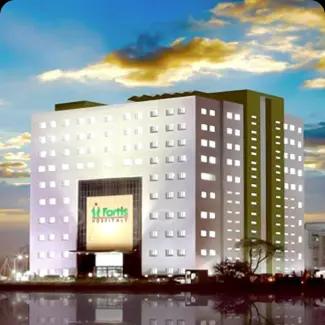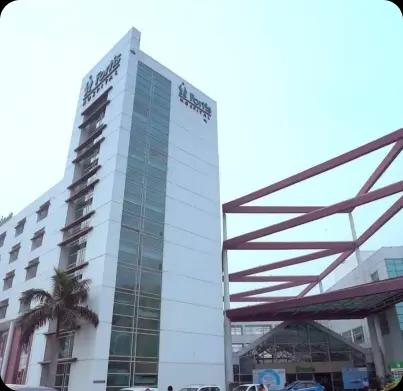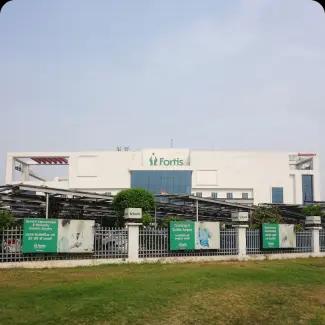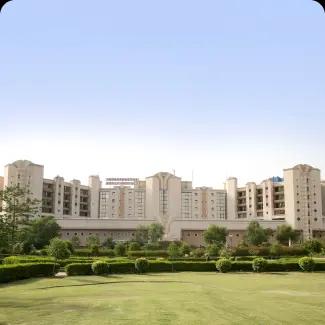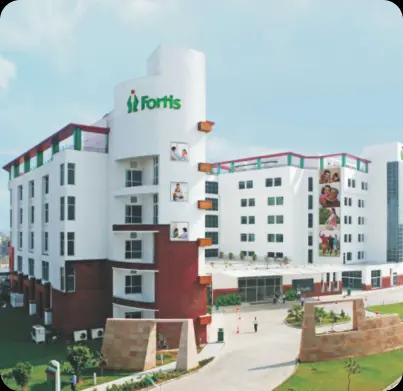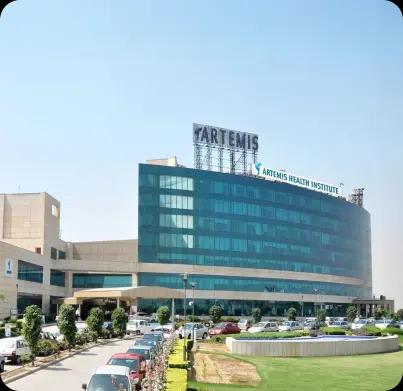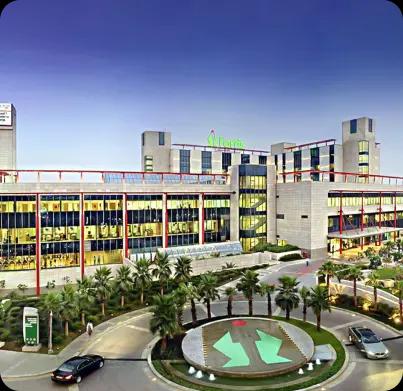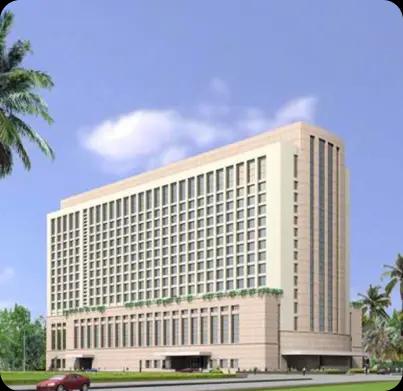
Renal Artery Angioplasty
Renal artery angioplasty is a minimally invasive procedure for treating blockages in the arteries supplying the kidneys, often due to atherosclerosis. A catheter with an inflated balloon is inserted into the narrowed artery, expanding it to enhance blood flow, relieving kidney dysfunction symptoms and potentially averting complications like high blood pressure or kidney failure.
Free Pick up and Drop
No Cost EMI
Post Surgery Care
Renal artery angioplasty is a minimally invasive procedure for treating blockages in the arteries supplying the kidneys, often due to atherosclerosis. A catheter with an inflated balloon is inserted into the narrowed artery, expanding it to enhance blood flow, relieving kidney dysfunction symptoms and potentially averting complications like high blood pressure or kidney failure.
Symptoms Of Renal Artery Angioplasty
Symptoms
Types of conditions
There are two main types of Renal Artery Angioplasty
Balloon Angioplasty
Stent Placement
Balloon Angioplasty
- A catheter with a deflated balloon is guided into the narrowed renal artery.
- The balloon is inflated, pushing the plaque against the artery wall, widening the artery, and improving blood flow.
Symptoms of Renal Artery Stenosis
- High blood pressure : Renal artery stenosis can restrict blood flow to the kidneys, leading to activation of the renin-angiotensin-aldosterone system, which elevates blood pressure. Despite medication, blood pressure may remain high due to the underlying vascular obstruction.
- Decreased kidney function : Reduced blood flow to the kidneys caused by renal artery stenosis can impair kidney function over time, potentially leading to chronic kidney disease characterized by decreased filtration and retention of waste products in the bloodstream.
- Swelling in the legs : Impaired kidney function can result in reduced sodium and water excretion, leading to fluid retention and swelling in the legs known as edema.
- Shortness of breath : Renal artery stenosis can lead to fluid overload and heart failure, causing symptoms such as shortness of breath, especially when lying down due to fluid accumulation in the lungs (pulmonary congestion).
Diagnosis
Before undergoing renal artery stenting, you will undergo a thorough assessment by a healthcare provider. This assessment includes checking your general health and vital signs such as temperature, pulse, and blood pressure. Additionally, several tests may be conducted to determine the need for renal artery stenting:
-
Duplex Doppler ultrasonography: This test utilizes sound waves to evaluate the size of blockages and the speed of blood flow within the renal arteries.
-
Computed tomography angiogram (CTA): A CT scan creates a 3D image of the kidneys using X-rays. Contrast dye may be injected to highlight the renal arteries.
-
Magnetic resonance angiogram (MRA): Similar to an MRI, MRA uses magnetic fields to produce detailed images of blood vessels. Contrast dye is injected to enhance visibility.
-
Angiogram: During this procedure, a catheter is inserted through the groin into the aorta and advanced to the renal arteries. Contrast dye is injected to visualize blood flow and detect any blockages.
Risk Factors
- Atherosclerosis
- Older age
- Hypertension
- Smoking
- Diabetes
- Family history
- Chronic kidney disease (CKD)
Preparing For Surgery
Before a procedure, disclose all medications, allergies, and any potential interactions with them to your healthcare provider. Discuss any potential bleeding risks and follow specific dietary instructions. An intravenous line will be inserted to administer pain medication and sedatives, allowing you to relax without being unconscious.
Understanding the Procedure
- A small incision is made in the groin or arm.
- A hollow tube known as a sheath is inserted into the artery through the incision.
- Another hollow tube called a catheter is then advanced into the affected renal artery through the sheath.
- A balloon may be inflated to open the blockage in the renal artery.
- A stent, a metal fine mesh tube, is placed across the blockage and deployed to widen the channel for improved blood flow.
- The stent remains in place to sustain blood flow.
- Once properly positioned, the angioplasty catheter is removed, and pressure is applied over the incision site or a specialized device is used to close the artery opening.
- A bandage is placed over the incision to complete the procedure.
Following a procedure, lie flat and keep the leg straight for up to 6 hours to prevent bleeding. Stay overnight for observation and drive home if discharged. Follow post-procedure care instructions, especially wound care at the insertion site. Consult your doctor for personalized advice on blood clot prevention.
Recovery
Renal artery stenting patients undergo a recovery period at the hospital, monitored by healthcare providers. They are advised to have a family member or friend drive them home. During this time, they may be prescribed blood-thinning medications to promote blood flow and prevent clot formation. Medication usage varies and should be consulted with a doctor.
Your journey to good health begins here

Accredited Hospitals
Nationally accredited hospitals for high-quality care

Multi-language Support
Convey your needs in the language you're most comfortable in

Travel Booking Assistance
Seamless booking assistance for your healthcare journey

Personalised Treatment Plans
A treatment journey tailored to all your preferences and needs

Unparalleled Hospitality
Experience exceptional hospitality during your stay

Easy Medical Visa Approvals
Dedicated assistance for medical visa requirements
Plan your healthcare journey with Karetrip!
India’s Best Hospitals are Partnered With Karetrip
Access World-Class facilities from top Hospitals across India
Consult with India’s most experienced doctors
Experience premium care from India’s leading specialists

Dr. V V Lakshminarayanan
Nephorologist
45+ Years Of Experience

Dr. Ashok Kumar R
Nephrologist
21+ Years Of Experience

Dr. Sathish M. Rao
Nephrologist
33+ Years Of Experience

Dr. Navdeep Singh Khaira
Nephrologist
38+ Years Of Experience

Dr. Sandeep Guleria
Nephrologist
35+ Years Of Experience

Dr. Alka Bhasin
Nephrologist
24+ Years Of Experience
Cost Estimation
Learn about the expenses involved in the procedure and what factors affect them.

The average cost of a renal angiogram in India starts at ₹ 10,000, but prices may vary between hospitals in different cities. Renal Artery Balloon Angioplasty or Stenting costs range from ₹1,00,000 to ₹ 2,00,000, depending on factors such as the number of balloons or stents used, the technique and equipment employed, and the room category.
The average cost of the Renal Artery Angioplasty in India is around ₹ 75,000 to ₹ 2,00,000.

₹ 2,00,000
High Cost
₹ 1,50,000
Average Cost
₹ 75,000
Low Cost
The LIST of AVERAGE COST of the Renal Artery Angioplasty across TOP 6 cities in India in Indian Rupee (INR) is as follows :
City
Lowest Cost
Average Cost
Highest Cost
Hyderabad
₹ 1,10,000
₹ 1,50,000
₹ 2,00,000
Vizag
₹ 80,000
₹ 1,00,000
₹ 1,80,000
Nellore
₹ 80,000
₹ 1,30,000
₹ 2,00,000
Kurnool
₹ 75,000
₹ 1,00,000
₹ 1,80,000
Mumbai
₹ 1,50,000
₹ 1,80,000
₹ 2,00,000
Pune
₹ 80,000
₹ 1,00,000
₹ 2,00,000
Commonly Asked Questions
When can I go back to work?
Most people can return to work within a week after the procedure. Those with physically demanding jobs may need more time off for healing.
Will renal artery stenting cure renal artery stenosis?
Renal artery stenting enlarges the channel for blood flow to the kidney but may not cure high blood pressure completely, and stenosis can return over time.
How long do renal stents stay in?
Renal stents are permanent implants.
Are renal stents painful?
Renal artery stents aren't typically painful; some may experience mild discomfort during placement.
When is a stent needed for a renal artery?
Stents may be needed for blockages greater than 60% in one or both renal arteries or when blood pressure remains uncontrolled with medications.

Do you still have a query?


"I had a successful surgery at Fortis Escorts Hospital, and it was all thanks to Karetrip's help in finding the right hospital for me. The entire process was smooth and stress-free, with Karetrip handling all the arrangements and answering any questions I had. The medical team at the hospital was outstanding, and the facilities were top-notch. I highly recommend Karetrip to anyone looking for a tension-free healthcare experience."
Read MoreFatima
Chattogram


"Thanks to Karetrip, I got connected with MAX Hospital in New Delhi. The team guided me through every step – from finding the right doctor to handling travel and visas. They made a daunting process feel like a breeze. The care I received at MAX Hospital was outstanding, and I can't thank Karetrip enough for making it possible. They truly put patients first and go the extra mile to ensure a smooth healthcare journey. I'm grateful beyond words!"
Read MoreHasan
Dhaka


"At first, I was unsure about having a medical procedure done in a foreign country. However, Karetrip's team at Indraprastha Apollo Hospital made me feel much better. The hospital was very clean, modern, and had everything they needed to help me. The staff were very kind and did everything they could to make me feel comfortable. I'm really happy with how my treatment turned out, and I appreciate Karetrip for making it easy and stress-free."
Read MoreImran
Sylhet
 Google Reviews4.9/5
Google Reviews4.9/5




I had a successful surgery at Fortis Escorts Hospital, and it was all thanks to Karetrip's help in finding the right hospital for me. The entire process was smooth and stress-free, with Karetrip handling all the arrangements and answering any questions I had. The medical team at the hospital was outstanding, and the facilities were top-notch. I highly recommend Karetrip to anyone looking for a tension-free healthcare experience.
Fatima
Chattogram
 Google Reviews4.9/5
Google Reviews4.9/5




